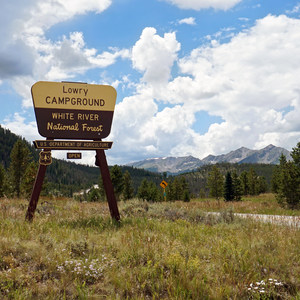You are here
In a state plagued by dangerous avalanche conditions that can threaten to cancel trips for even the most ambitious mountaineers, the high ridges offer a safe winter escape into the mountains without having to worry about a deadly slide. Grizzly Peak (also known as Grizzly Peak D, to avoid confusion), sitting high above Loveland Pass at 13,440 feet, is one such mountain that can be climbed by the beginner mountaineer in winter and early spring when other snow routes are simply not safe yet. While the climb is not incredibly technical, the variable conditions of the wind and long ridgewalk make bringing an ice ax and crampons a good idea, even if you’ll likely be in microspikes the whole time.
The summit only sits 1,500 feet above the pass, but don’t be fooled; this hike is a roller coaster with a sizeable amount of climbing on the descent back to your car, so you won't feel like the day is over until you finally have an unobstructed view of Loveland Pass again. Because the trailhead is at 12,000 feet, with much of your day taking place above 13,000 feet, those that are just starting the climbing season will feel the altitude the whole time. The morning starts with the longest actual ascent of the day, which proceeds along the Mount Sniktau Trail and includes the first summit of the day. From here, most people will be turning left to Mount Sniktau, but your day takes you south toward the next summit of Cupid.
Descend to the saddle and climb up to Cupid (13,194 feet), where the next batch of people will likely be calling it a day. From Cupid you’ll have a nice view of what the rest of the climb is going to entail, and the full grandeur of the north faces of Grizzly and Torreys really become clear. Do another descent from Cupid; halfway down there will be some Class II rock to traverse, but it shouldn’t pose much of a problem. At the bottom of the next saddle there is yet another bump on the ridge that requires some climbing. Make sure to keep to the right to avoid punching through a cornice that often forms on the ridges here. This last bump is the last “wasted” climbing before the final approach to the summit of Grizzly Peak.
The final approach to Grizzly is only around 600 feet of climbing, but the steepness really increases, and you will have already climbed close to 2,000 feet already. This is the only time you will likely need your ax and crampons, but depending on conditions it could be windblown enough that trekking poles and spikes should suffice. Once the steep final climb is over, enjoy the views and rest, since on the way back another 1,000 feet of climbing or so are waiting for you. The only real shortcut you can take on the return is cutting the corner on the lower hill where the Sniktau Trail breaks off, but be careful because this is an avalanche slope in deep snow. On your return to the car, relish the fact that even in bad avalanche conditions, a wonderful day in the mountains is still possible in Colorado!











Comments
Sign In and share them.